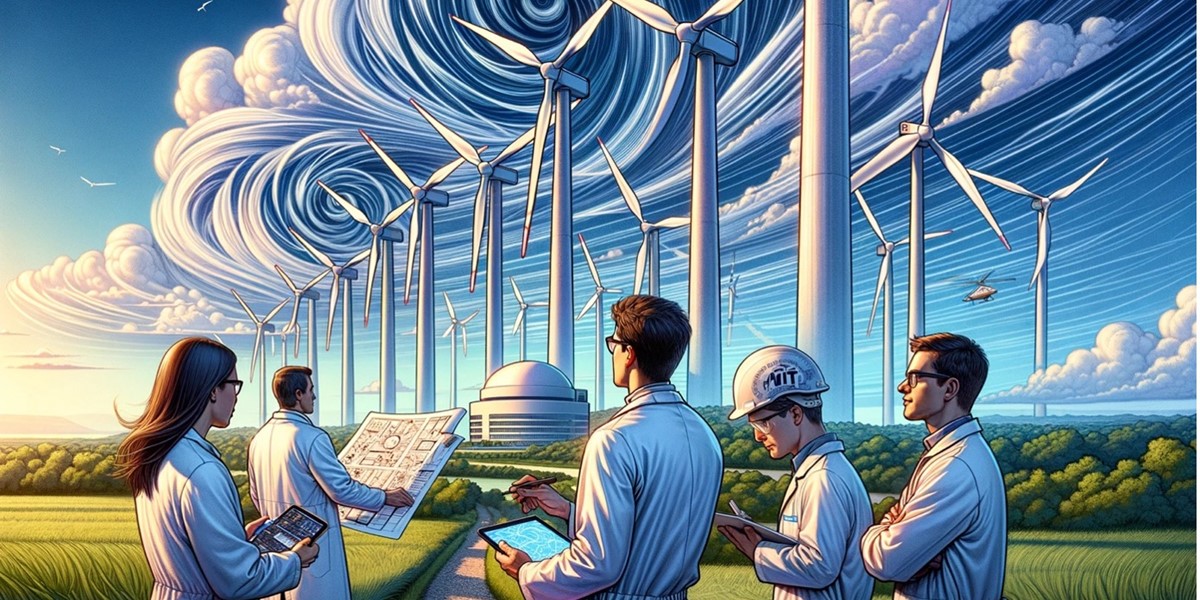Massachusetts Institute of Technology (MIT) wake effects optimization will spare us from building a wind farm the size of Flanders

Nowadays, when it comes to placing wind farms, whether onshore or offshore, an increasing number of factors must be considered. The potential energy output and associated costs are now just part of the equation. Additional critical questions include: What are the emissions impacts from manufacturing? What are the environmental impacts? And so on. As a result, commissioning wind farms has evolved into a complex decision-making process. However, there are innovative developments in wind farm technology that positively impact all these considerations. A notable example is the advancement in wake modeling developed by the Massachusetts Institute of Technology (MIT).
Wind turbines are typically installed in groups, known as farms, for economic viability. One key consideration in their placement relates to energy production. The optimal energy output from a turbine is achieved when it can capture wind without any turbulence. However, when turbines are positioned in succession, the ones downstream experience what is known as wake effects from the turbines ahead of them. These wake effects disrupt the airflow behind the leading turbine, resulting in less optimal airflow for the following turbines and consequently decreasing their energy production.
Figure: Exaggerated wake effects causing turbulent wind flow behind turbines

Source: Vattenfall
If a developer aims to maximize energy production, it would necessitate substantial distances between turbines to mitigate the wake effects. However, this approach quickly becomes impractical from both ecological and economic perspectives. Increasing the distance between turbines leads to higher cabling costs and greater emissions associated with the installation, due to the expanded size of the farm. From an ecological standpoint, a larger farm size also translates into a more extensive affected area, potentially exacerbating negative impacts on local habitats and biodiversity. Thus, it appears that wake effects are an inevitable compromise in the pursuit of green energy production.
Bearing these challenges in mind, a team at the Massachusetts Institute of Technology (MIT) embarked on a quest to optimize energy production for wind farms, even when turbines are placed in close proximity. Their innovative approach deviated from the traditional method of optimizing the energy production of each turbine individually. Instead, they focused on optimizing the energy production of the entire wind farm. By strategically positioning a turbine not in its individually optimal position, but in a way that reduces wake effects for the downstream turbines, the energy production of the subsequent turbines could significantly increase, compensating for the initial loss and leading to a net gain in energy for the entire farm. The total increase in energy production ranged between 1% and 3%, with the higher gains seen under optimal wind speeds. While this improvement might seem modest at first glance, its significance becomes apparent when put into context.
Because this optimization strategy does not require changes to hardware or the physical relocation of turbines, every existing wind farm worldwide can instantly adopt this insight. The current global wind farm capacity is approximately 900 GW. With MIT's optimization, about 15 GW of extra capacity can be generated. This is equivalent to the output of five Princess Elisabeth Zone offshore wind parks, covering a total area of 1,400 square kilometers; nearly the size of London. Projecting this to the estimated wind farm capacity of 6,000 GW by 2050, about 120 GW could be saved. This would preserve around 11,000 square kilometers; nearly the size of Flanders. The increase in energy production is just one advantage. Reducing the need for additional wind farms also leads to cost savings. Furthermore, the conservation of space not only protects vast areas of ecosystems but also makes these areas available for other uses.
Innovative approaches such as these are propelling the green economy towards even greater sustainability. It's evident that renewable energy systems have their vulnerabilities, but through continuous innovation, we are preparing for the essential energy transition needed by 2050.
Econopolis Strategy serves as an economic advisor, specializing in modeling the optimal positioning for offshore wind turbines, among other roles, within the North-C-Neutral project. This involvement highlights the importance of strategic planning and innovative solutions in overcoming the challenges faced by renewable energy projects and underscores the collaborative effort required to achieve a sustainable energy future.